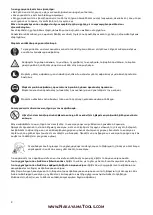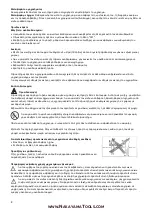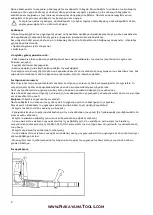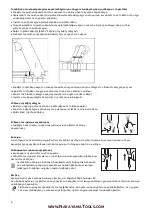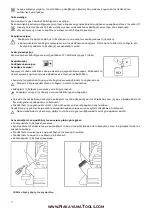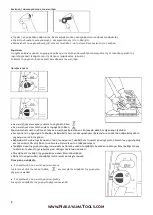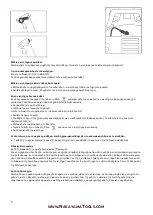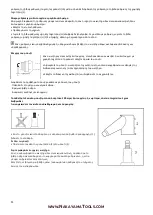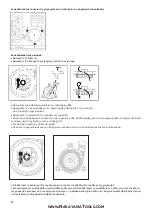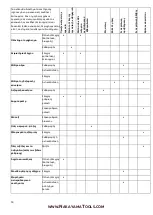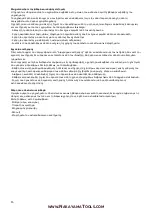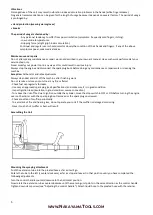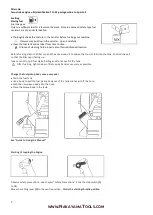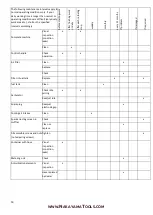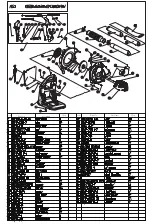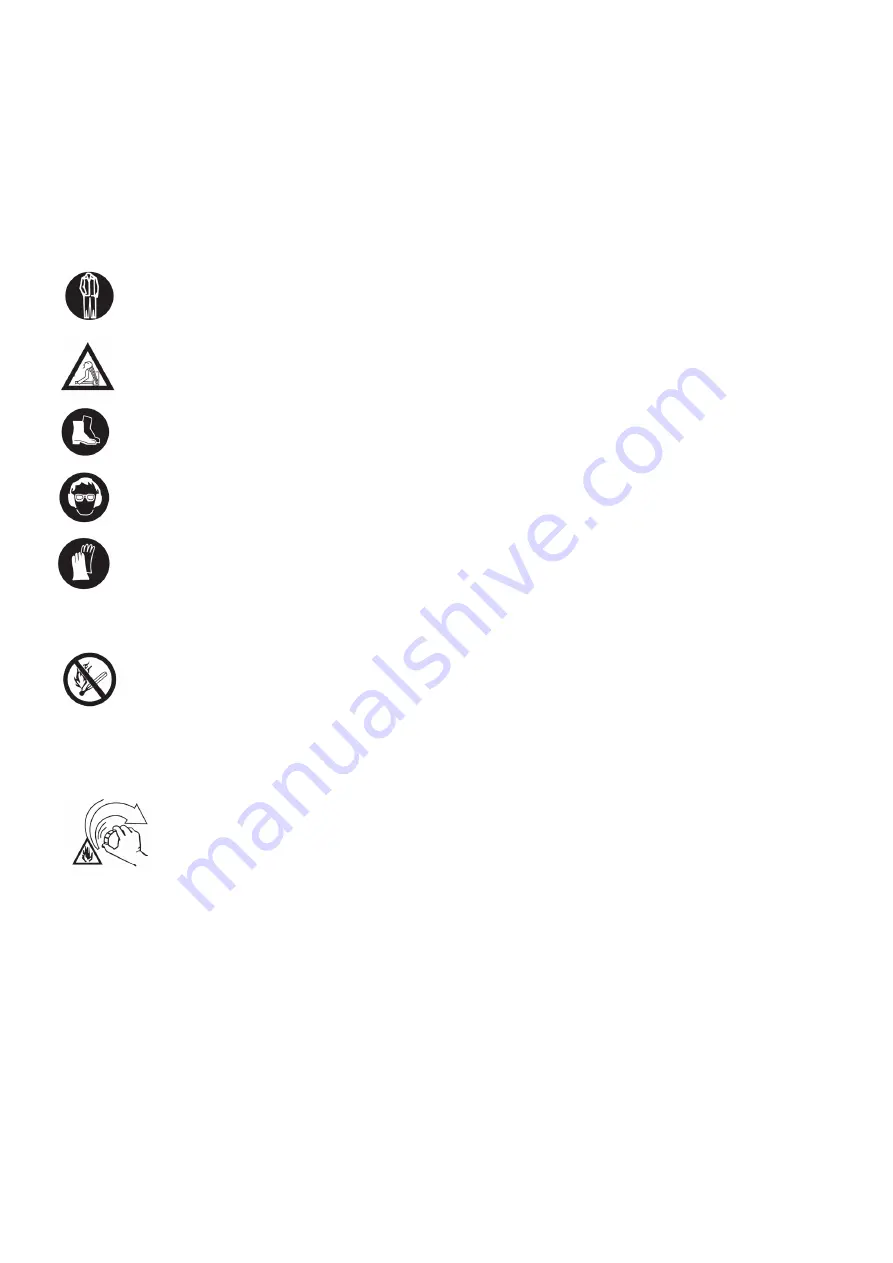
3
WWW
.N
AKAYAMA
T
OOLS
.
COM
You must be fit to work with a blower
•
Rested, healthy and in good physical and mental condition
•
If you get tired, take a break in good time
•
Do not operate the blower if you are under the influence of any substance (drugs, alcohol, etc.) which might impair vision,
dexterity or judgment.
Only attachments supplied are expressly approved for use with your specific model are authorized.
Other attachments must not be used because of the increased risk of accidents.
Excludes all liability for personal injury and damage to property caused while using unauthorized attachments.
Wear proper clothing and equipment
Clothing must be sturdy and snug-fitting, but allow complete freedom of movement - a safety coverall is
recommended.
Avoid loose-fitting jackets, scarfs, neckties, jewelry, flared or cuffed pants, unconfined long hair or anything that
could get into the air intake.
Wear sturdy boots with nonslip soles. Steel-toed safety boots are recommended.
Wear safety glasses, goggles or a face shield.
Wear sound barriers (ear plugs or ear mufflers) to protect your hearing.
Wear heavy-duty, nonslip gloves, preferably made of chrome leather.
Always shut off the engine before refuelling.
Gasoline is an extremely flammable fuel. Do not smoke or bring any fire or flame near the fuel.
Do not fuel a hot engine - fuel may spill and cause a fire.
Remove the fuel filler cap on the unit carefully so as to allow any pressure build-up in the tank to release slowly.
Fuel your blower, in well-ventilated areas, outdoors only. Wipe off any spilled fuel before starting and check for leakage.
Take care not to get fuel on your clothing. If this happens, Change immediately.
Unit vibrations can cause an improperly tightened fuel cap to loosen or come off and spill quantities of fuel.
In order to reduce risk of fuel spillage and fire, tighten fuel cap as specified.
On units with a screw cap: Tighten the cap by hand with as much force as possible. On units with hinged handle on the fuel
cap: Tighten as described in chapter "Fueling".
Check for fuel leakage while refueling and during operation. If fuel leakage is found, do not start or run the engine until leak
is fixed.
Store gasoline and oil in properly labelled, approved safety-type cans.
Transporting the unit
Always stop the engine.
Transporting in a vehicle: Properly secure your unit to prevent turnover, fuel spillage and damage. When the unit is not in use
(work break), put it down so that it does not endanger others.
Summary of Contents for BL4300
Page 1: ...BL4300 Owner s manual Art Nr 023456 WWW NAKAYAMATOOLS COM...
Page 2: ...2 WWW NAKAYAMATOOLS COM GR 1 2...
Page 3: ...3 WWW NAKAYAMATOOLS COM...
Page 4: ...4 WWW NAKAYAMATOOLS COM OFF 3 10...
Page 5: ...5 WWW NAKAYAMATOOLS COM Service OFF ON...
Page 6: ...6 WWW NAKAYAMATOOLS COM 90 Premium...
Page 7: ...7 WWW NAKAYAMATOOLS COM TC H 1 2 TC 25 1...
Page 8: ...8 WWW NAKAYAMATOOLS COM 1 ON 2...
Page 9: ...9 WWW NAKAYAMATOOLS COM 2 1 OFF OFF ON 5 15...
Page 10: ...10 WWW NAKAYAMATOOLS COM 1 2 H L 1 4 H L LA L LA...
Page 11: ...11 WWW NAKAYAMATOOLS COM LA L H H 1 4 A 100 1 2 3 Service...
Page 12: ...12 WWW NAKAYAMATOOLS COM 1 2 3 4 5 6 7 5 4 3...
Page 13: ...13 WWW NAKAYAMATOOLS COM OFF 3 UV 43cc 1 7hp 12m3 min 4200m3 min 1 2L Service...
Page 14: ...14 WWW NAKAYAMATOOLS COM 12 x x x x x x x x x x x x x x x x x x x x x Service x...
Page 15: ...15 WWW NAKAYAMATOOLS COM Service...
Page 30: ...Ser No Part No Part Name Qty Ser No Part No Part Name Qty...
Page 31: ...Ser No Part No Part Name Qty Ser No Part No Part Name Qty...

